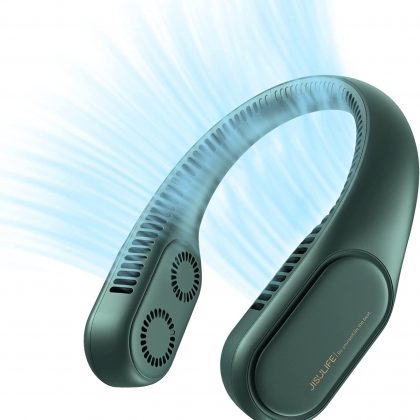Feature your business, services, products, events & news. Submit Website.
Breaking Top Featured Content:
The 11 Best Competitive Ads We’ve Ever Seen on Google
I’m not a terribly competitive person.
Well—I guess I shouldn’t say that. I’m not always a competitive person. Like, if you beat me in a rainy day game of Monopoly, I’ll probably shrug my shoulders, murmur something about the Parker brothers feeding propaganda to children, and lay down for a nap.
Claim to be a bigger fan of The Cabin in the Woods than me, and I might get a little hot under the collar. But that’s neither here nor there.
Whether you’re a competitive person or not, there’s no denying the power of a perfectly executed competitive ad. And thanks to the high degree of control you enjoy when advertising on the basis of keywords—changes to match types notwithstanding—Google Ads provides a golden opportunity to get your best messaging in front of your competitors’ prospects.

In today’s post, after briefly explaining the logistics of Google Ads competitor targeting, we’ll walk you through the 11 best competitive ads we’ve ever seen in the Google search results.
Instantly find out how you stack up against your Google Ads competitors by running our free Google Ads performance Grader!
How do you run competitive ads on Google?
Running competitive ads on Google means engaging in a tactic known as competitor targeting. The basic idea is that targeting a competitor’s brand name as a keyword allows you to advertise your business—and, thus, offer an alternative product or service—whenever a user searches for them on Google.

Not one of the best competitive ads we’ve seen, but you get the idea.
Running competitive ads on Google, as you may have already guessed, is a roll of the dice. Why? Because you can never know for sure whether the intent behind a branded search query is informational or navigational. Whereas informational intent means the user is simply looking for information, navigational intent means they want to visit a specific website.
Let’s use the above screenshot as an example. It’s entirely possible that a user who searches “hellofresh” has recently heard a podcast ad for the company and has decided to use Google to find more information. If this is the case, a competitive ad like Home Chef’s could be a slam dunk; because the user isn’t fully committed to HelloFresh, this is a great opportunity for Home Chef to present themselves as an alternative solution.
However, it’s also possible that the user is already a HelloFresh customer and is simply using Google to navigate to the company’s website. If this is the case, Home Chef has virtually no chance of enticing the user to click and make a purchase from them instead.
This leads me to another important point: If you decide to run competitive ads on Google, you have to feel comfortable with subpar quality scores. Because a lot of branded queries are navigational in intent, it’s likely that your competitor keyword click-through rates—and, therefore, your competitor keyword quality scores—will be below average. Plus, the fact that you can’t include competitor brand names in your copy diminishes the relevance of your ads.
And that’s okay! Though you should generally aim for high quality scores, doing so really isn’t possible when you’re running competitive ads. If you focus on writing compelling copy that grabs the attention of users with informational intent, it’ll all be worth it.
For inspiration, you should draw from these 11 ads.
The 11 best competitive ads we’ve seen on Google
To ensure that anyone can walk away from this post with some competitive inspiration, we’ve assembled a mix of both B2C and B2B companies. For each one, we’ll break down exactly what makes it an awesome competitive ad.
1. 2Movers vs. U-Haul

The effectiveness of this ad lay in the second headline: No Need to Rent A Truck. By speaking directly to what the user is trying to accomplish and assuring them that there’s an easier solution, 2Movers puts forward a really compelling value proposition. Plus, the inclusion of a low price in the first headline makes their offer that much harder to resist. If you’re like me and find the idea of renting a U-Haul completely unappealing, you’re clicking this ad quickly.
2. Tuft & Needle vs. Casper

Let’s address the elephant in the room: I haven’t the slightest clue why Tuft & Needle put their first headline in quotation marks. Though it makes no sense and annoys me endlessly, it’s not enough to knock them off this list.
Why? Because their second headline is just that good. When marketers refer to using the headline to create a curiosity gap, they’re typically talking about organic search. Nonetheless, Tuft & Needle successfully employs the power of mystery in this ad of theirs. By claiming to know “the truth” about Casper and implying that it has something to do with the price of their mattresses, Tuft & Needle makes their ad infinitely more compelling.
3. Glassdoor vs. Ziprecruiter

Here, Glassdoor takes an approach somewhat similar to that of 2Movers. In the first headline, they perfectly mirror the user’s query and effectively turn it into a call to action. Wisely, they follow that up with a simple yet attractive value proposition: Reach Millions of Job Seekers. Beyond making a strong impression—that’s a lot of job seekers—this second headline also does a great job of matching the user’s intent—that is, to reach potential candidates.
4. Lyft vs. Uber

Just like Glassdoor, Lyft does a perfect job of mirroring the search query and incorporating it into their core CTA: Apply to Become a Lyft Driver. But that’s not what makes this a great competitive ad—it’s the second headline that really brings it home. Typically, people decide to drive for companies like Uber and Lyft because they’re in need of some extra cash. By including a specific amount of money ($1,500) and a specific timeline (one month), Lyft makes a strong, concrete case for driving with them.
5. Pep Boys vs. Meineke

Nothing too complicated going on here, folks: By using the competitor targeting tactic to promote a limited-time offer, Pep Boys puts forward an appealing alternative to Meineke. More subtly, by repeatedly including “tires” throughout their copy, they boost their keyword relevance and claim the top sponsored search result.
Another aspect of this competitive ad that I like quite a bit is the inclusion of a location extension (seen at the very bottom of the ad). It’s never a bad idea to let users know that you can help them out at a nearby location—especially when you’re directly competing with another company.
6. SendinBlue vs. MailerLite

According to Google: “If a trademark owner submits a complaint to Google about the use of their trademark in ads, we’ll review it and may enforce restrictions on the use of the trademark.”
That’s why I said you can’t include your competitors’ brand names in your ad copy—because they’ll almost certainly report you to Google. Evidently, SendinBlue isn’t too concerned about it.
I love the directness of SendinBlue’s messaging here: “We offer an alternative to MailerLite and you can try it—right now—for $0/month.” Additionally, this is a rare case in which I’m actually impressed by an advertiser’s use of description copy; the ability to send up to 40,000 emails for only $25/month definitely jumps off the screen.
Finally, to bring everything home, the use of an ad extension to promote a deal on annual plans is a super nice touch.
7. Shipt vs. Instacart

You know you’ve written an awesome competitive ad when you manage to squeeze not one but two value propositions into your headline copy. That’s exactly what Shipt does here in their efforts to compete with Instacart. As a result, with one single ad, they successfully position themselves as a convenient solution in two separate use cases
In the first case, someone who’s procrastinated the task of ordering food for a gathering or an event hurriedly searches for the first food delivery service they can think of: Instacart. Here comes Shipt to save the day—prominently highlighting their same-day delivery service.
In the second case, someone who’s trying to host a group of people while sticking to a budget takes to Google to learn more about the services at their disposal. Once again, Shipt is there with the perfect solution—free delivery on orders over $35.
8. Sell Back Your Book vs. Chegg

As someone who recently graduated college, I’m especially appreciative of this competitive ad from Sell Back Your Book. The first headline—”We Pay the Shipping”—demonstrates their understanding of the user’s chief pain point in a succinct, effective way. Recognizing that students are often strapped for cash—hence the demand for used books in the first place—Sell Back Your Book makes the perfect money-saving offer: free shipping. Plus, the second headline injects a little urgency into the copy and lets the user know that they can take care of their problem right now.
9. Asana vs. Monday.com

Much like Tuft & Needle, the team over at Asana is using their competitive ad copy to create a curiosity gap. It would be one thing to simply claim that teams make the switch from Monday.com to Asana; it’s another thing to invite users to visit the Asana website and find out why. For high-funnel users who’ve just started doing research, this ad could prove hugely influential.
It also doesn’t hurt that Asana’s value proposition—All Your Work In One Place—is infinitely better than Monday.com’s—Work Better with Monday.com. Regardless of where this particular user falls in their customer journey, we know for a fact that they’re looking for a solution that will help them get more organized. Asana’s copywriters seem to have a greater appreciation for that.
10. Valvoline vs. Jiffy Lube

This one from Valvoline is another perfect example of a competitive ad that isn’t doing anything complicated. It’s safe to assume that someone who searches “jiffy lube” is looking to find a nearby solution—fast. What better way to grab their attention than with a $25 coupon? The fact that Valvoline has managed to snag the top sponsored position doesn’t hurt, either.
In addition to the inclusion of a location extension at the bottom of the ad, I’m a fan of the second headline—Find A Location Near You. Why? Because it implies a simple yet important promise: “Click our ad and we’ll connect you with the most convenient solution possible.”
11. LinkedIn vs. Twitter

It’s always good to end on a bit of a meta note, right? In this case, LinkedIn is using a competitive ad to build awareness among businesses interested in advertising on Twitter. Though LinkedIn and Twitter aren’t entirely similar, it’s a reasonably safe bet that someone looking to advertise on Twitter could be interested in LinkedIn advertising, as well.
It’s far from groundbreaking, but I like the simplicity of using “Grow Your Business” as the core value proposition; I think it succeeds in getting to the heart of the user’s intent. Elsewhere, the description does a great job of fleshing out that value prop. By referencing the immensity of their user base and the variety of objectives advertisers can pursue—brand awareness, lead generation, etc.—LinkedIn uses their description copy to really drive the point home.
Running competitive ads on Google: The big takeaway
As you’ve noticed by this point, you can go in a ton of different directions when running competitive ads on Google. Depending on which type of customer you’re trying to reach and which specific product or service you’re promoting, what makes your competitive ads successful will be unique to your business and industry.
Nonetheless, we can leave you with a universal takeaway: The best competitive ads are the ones that closely align with the user’s intent and make compelling use of their copy. As long as you write copy that matches what the user is trying to accomplish and gives them a legitimate reason to click, you’ll find success.



